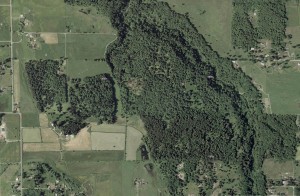
Large ranches and even groups of smaller ranches are starting to learn about Spatial Information Technologies. For example, there is a seminar about this field led by Eric Redeker at the King Ranch Institute in Texas on May 18.
Although most cowboys probably don’t twitter and have Facebooks pages, technology is playing an increasingly important role. It’s a lot more than cell phones and radio frequency cattle ear tags these days. Many ranch operations of all sizes use computers to keep track of information about their cattle and fields. SIT is the next leap forward.
Spatial Information Technologies (SIT) is about the collection of data and manipulation of that data to determine physical characteristics and spatial relationships of objects (e.g. trees, stands, soil types, wood yards, wildlife food plots, lakes, streams, roads, buildings).
Although it includes the disciplines of: Remote Sensing (Satellite Data, Aerial Imagery) and Global Positioning Systems (GPS), the real pioneering work is in Geographic Information Systems (GIS). Think of GIS as the “user interface” that lets you see and understand all kinds of data relationships.
For example, you can use satellite data to look at the vegetation in your area, determining how covering it is, precipitation levels and what is its condition. Different fields might give different results so you know where to move cattle. You could use very precise GPS information to know exactly where natural cattle migration paths that can be seen from satellite data are so you can make sure there is free access and water available. Use infrared images to spot “heat” sources like a cow hiding in a forest.
Sounds like Star Trek but there are very serious academic and engineering folks making this a reality in the next few years. Imagine old Crusty the cowboy using his cell phone to access the internet and see exactly where the cows are hiding today. Not so far off.
For information about the Eric Redeker seminar go to krirm.tamuk.edu.
